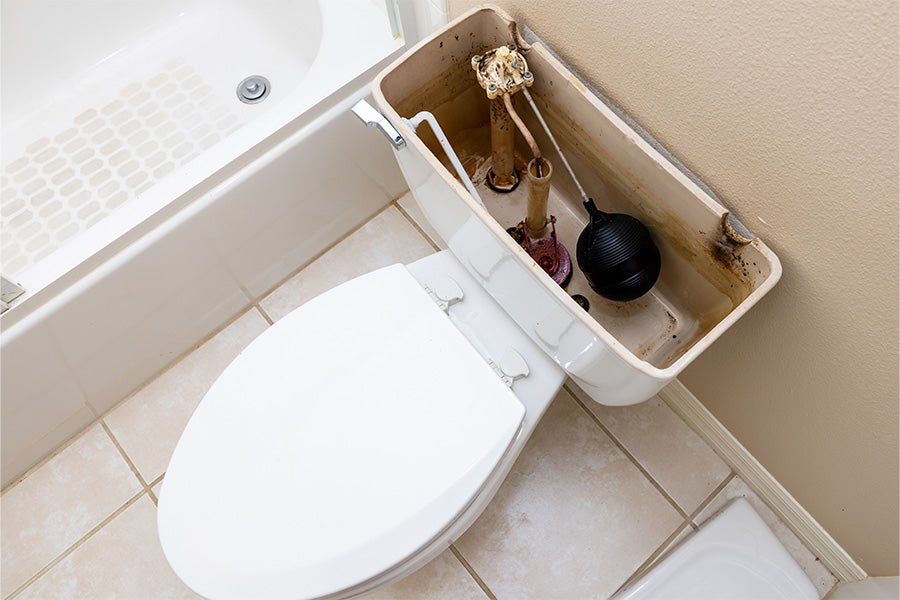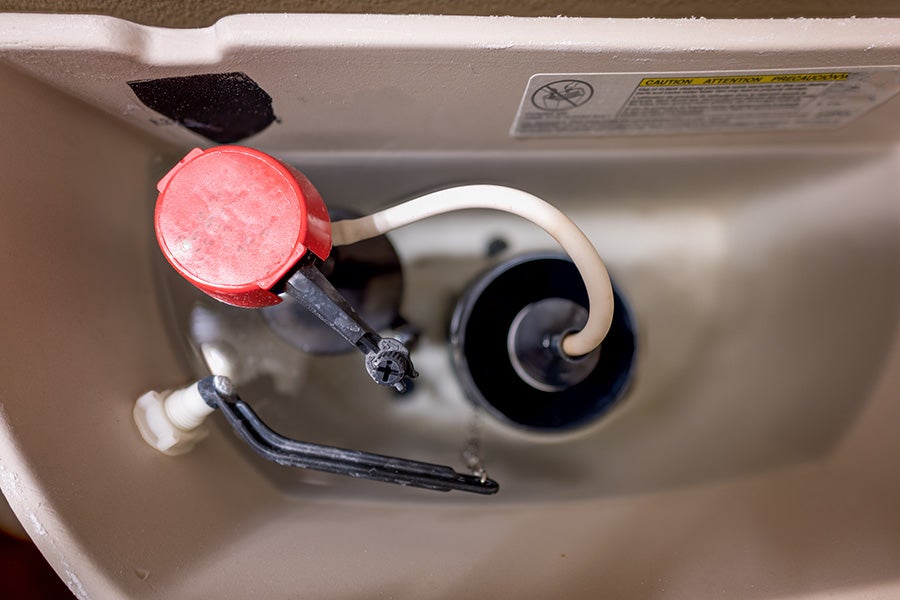Plumbing advice
How to adjust the water level in a toilet cistern
01 Jul 2025 • 5 minutes

Plumbing advice
01 Jul 2025 • 5 minutes
Service Excellence Coach

Ever noticed your toilet cistern seems too low or too high?
Fortunately, it's usually an easy fix. In this guide, we’ll walk you through step-by-step instructions to adjust the water level in your toilet cistern, helping you save water, avoid plumbing issues, and keep your bathroom running smoothly.
Keeping the correct water level in your toilet cistern is essential for both efficiency and hygiene.
If the water level is too low, it may not effectively flush waste, leading to a blocked toilet and unpleasant odours. On the other hand, if it’s too high, it can cause continuous running, wasting water, and raising utility bills.
Maintaining the proper level ensures your toilet operates smoothly, reduces the risk of plumbing issues, and supports water conservation efforts.
When the water level in your toilet cistern is too low, it can lead to all kinds of annoying problems.
For starters, the toilet’s flush might not be strong enough to clear everything out, which can cause clogs and leave you flushing more than once. It can also leave parts of the cistern exposed, making it easier for stains and mineral buildup to form. And without enough water to block sewer gases, you might even notice some unpleasant smells coming from your toilet.
If the water level in your toilet cistern is too high, it can create just as many issues as low water levels.
One big concern is the risk of overflowing. Too much water can also lead to constant running or refilling, which wastes water and can drive up your utility bills. Not only is that bad for your wallet, it’s also not great for the environment.
Before making any adjustments, be sure you know how to turn off the toilet’s water supply using the shut-off valve—usually located behind or beside the toilet—in case of an emergency.
Also, avoid taking apart the fill valve, as it’s a delicate component that can be easily damaged. To stay safe, stick to the built-in adjustment features designed for simple fixes.
To adjust the water level in your toilet, you’ll need just a few simple tools:
To keep your toilet working properly, the water level inside the cistern should sit about an inch below the overflow tube.

A ball-and-arm float is one of the most common and oldest toilet fill mechanisms. It’s easy to spot (it looks like a round ball attached to a metal arm inside the cistern). Here's how to adjust it:
Cylinder floats, also known as float cups, are common in modern toilets. Instead of a ball on an arm, you’ll see a plastic cup that moves up and down along the fill valve shaft. Here’s how to adjust it:

If adjusting the float doesn’t fix the issue, your fill valve might be worn out and need replacing. Here’s how to do it:
Once you’ve adjusted your toilet’s water level, a little upkeep can go a long way in keeping it steady. All it takes is a few easy tips to help maintain the right water level over time:
With a few simple checks, you can avoid bigger issues and keep your toilet working efficiently.
While adjusting your toilet’s water level is a simple fix, some plumbing problems need a professional. That’s where HomeServe comes in. Whether it’s a leak, clog, or faulty part, our trusted team is ready to help quickly and professionally.
For added peace of mind, our Plumbing and Drainage Cover is here to help avoid the stress of unexpected repairs. Reliable plumbing help is always just a call away.
Liam has been working for HomeServe for over 18 years, starting as a water supply engineer then obtaining the required qualifications and venturing into Plumbing and Drainage, expanding his knowledge of the sector.
There are not many places left in England where Liam has not completed a job for HomeServe. He’s worked on water from 4” pipes to 15 mm pipes. One of his biggest jobs to date was installing the water supply pipe to one of the training pools for the Olympics in London 2012. Liam is now one of our Service Excellence Coaches, who help support our engineers in the field.
Why HomeServe?Liam has been with HomeServe for so long because of the commitment they have on being the best, striving to give the customers the best journey. Many businesses do not care about their staff, this is not the case at HomeServe who put it at the heart of what they do.
18 years working in Water Supply, Plumbing and Drainage.
Liam has been working for HomeServe for over 18 years, starting as a water supply engineer then obtaining the required qualifications and venturing into Plumbing and Drainage, expanding his knowledge of the sector.
There are not many places left in England where Liam has not completed a job for HomeServe. He’s worked on water from 4” pipes to 15 mm pipes. One of his biggest jobs to date was installing the water supply pipe to one of the training pools for the Olympics in London 2012. Liam is now one of our Service Excellence Coaches, who help support our engineers in the field.
Why HomeServe?Liam has been with HomeServe for so long because of the commitment they have on being the best, striving to give the customers the best journey. Many businesses do not care about their staff, this is not the case at HomeServe who put it at the heart of what they do.
18 years working in Water Supply, Plumbing and Drainage.
Our help & advice articles cover Plumbing, Home heating, Electrical, Energy-saving and Home maintenance.